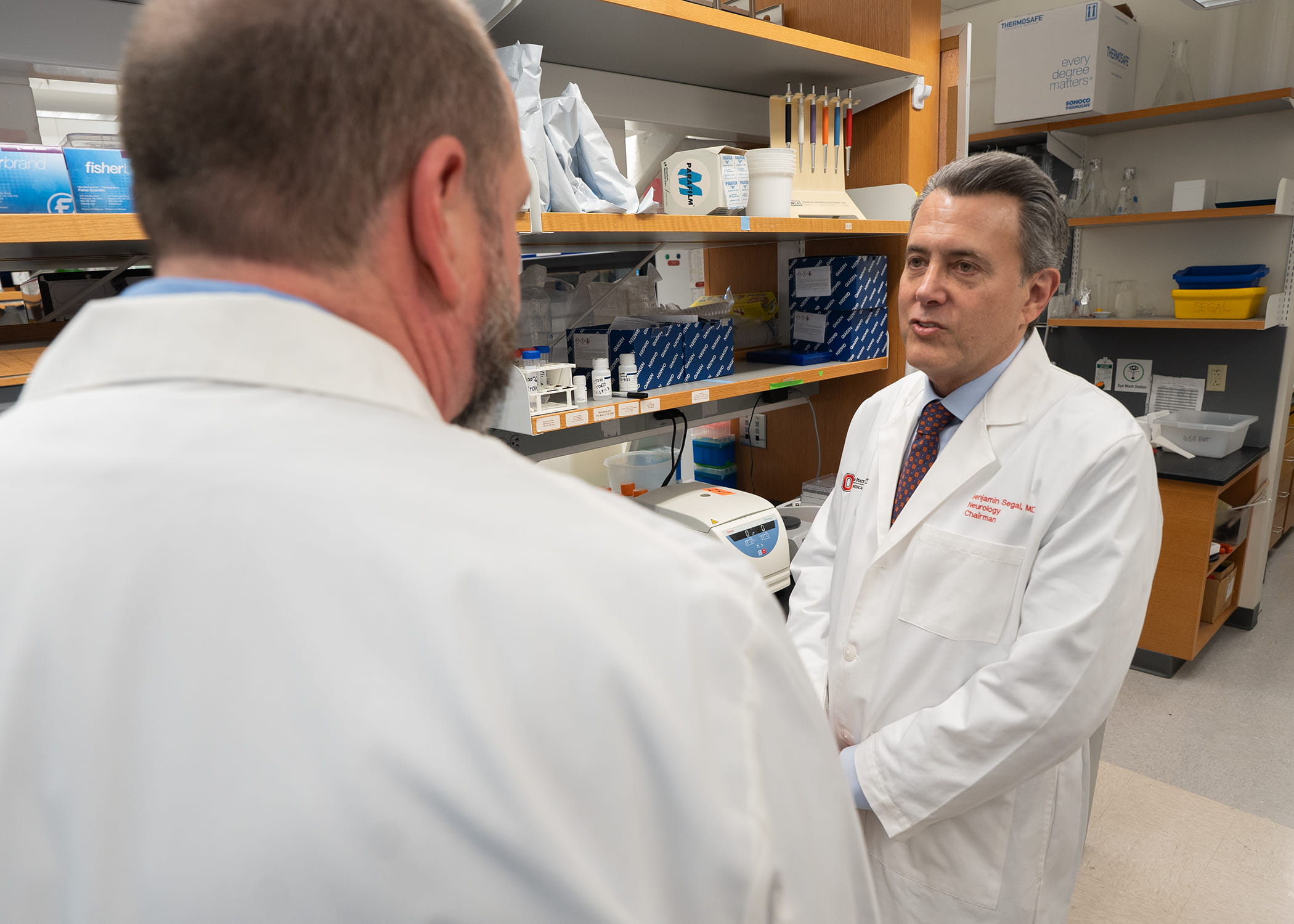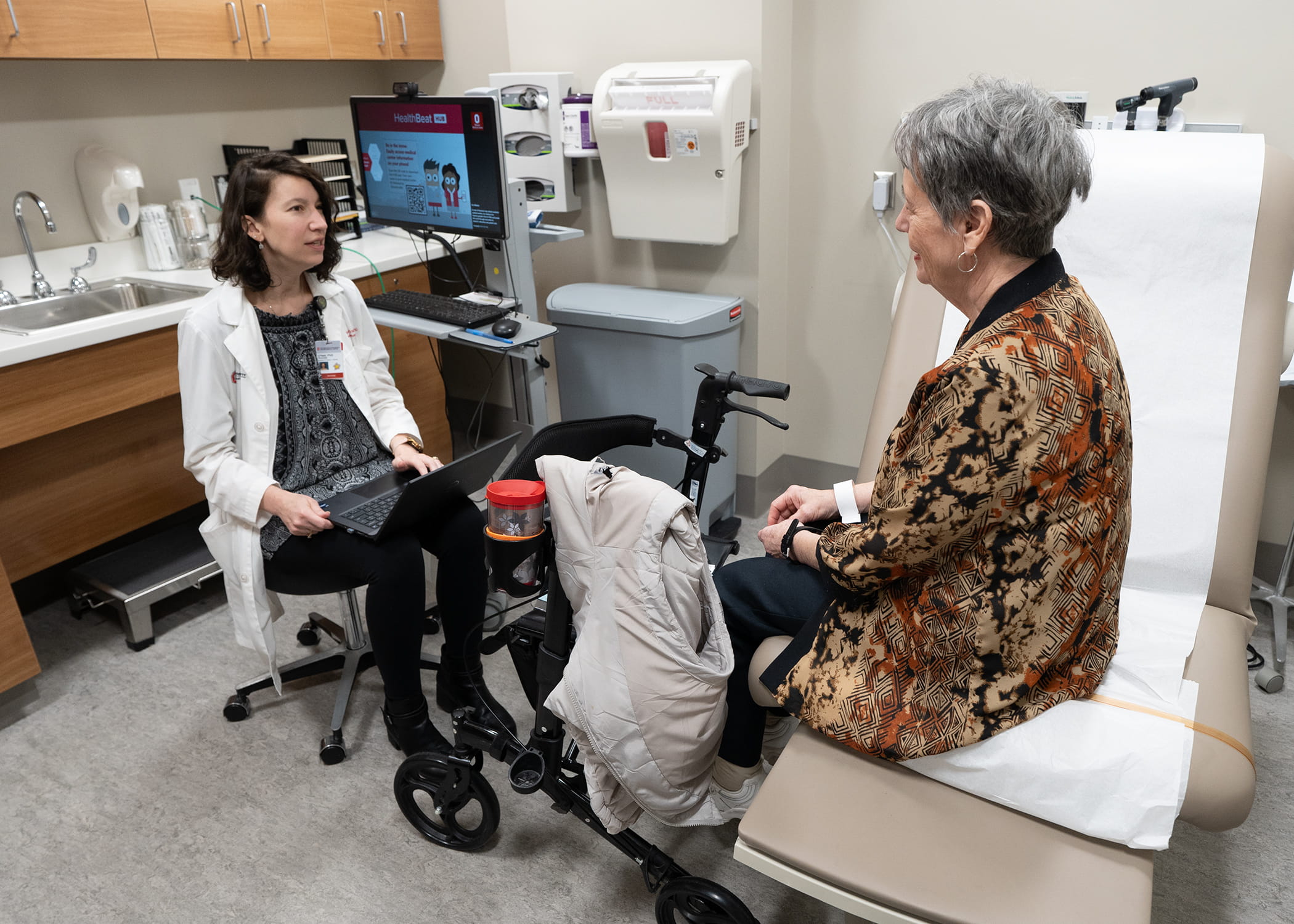February 28, 2024
COLUMBUS, Ohio – Physician scientists at The Ohio State University Wexner Medical Center and College of Medicine are studying why multiple sclerosis (MS) worsens as patients grow older.
MS is a condition where the body's immune system mistakenly attacks the optic nerves, brain, and spinal cord, leading to inflammation. Initially, it may present as
episodes of neurological symptoms that can often be controlled with medications, known as relapsing MS.
However, as time goes on, MS can transition into a relentless decline, becoming increasingly debilitating and less responsive to available treatments, known as
progressive MS.
 “What we're finding is that ‘biological age’ is the key to driving the evolution from relapsing to progressive forms of MS,” said Benjamin Segal, MD, professor and chair of Ohio State’s Department of Neurology who specializes in researching and treating patients with MS at Ohio State Wexner Medical Center. “The rate of biological aging can be influenced by a person’s genetic background, as well as environmental exposures and lifestyle.”
“What we're finding is that ‘biological age’ is the key to driving the evolution from relapsing to progressive forms of MS,” said Benjamin Segal, MD, professor and chair of Ohio State’s Department of Neurology who specializes in researching and treating patients with MS at Ohio State Wexner Medical Center. “The rate of biological aging can be influenced by a person’s genetic background, as well as environmental exposures and lifestyle.” Biological age – as opposed to chronological age – measures lifelong damage to cells and organs.
“The goal of our research is to determine if biological aging plays a role in certain people having more severe disease in MS compared to others,” said Yinan Zhang, MD, a neurologist specializing in multiple sclerosis and related neuro-immunological disorders of the central nervous system.
 “By understanding more about the aging processes, we can then find the exact ways aging contributes to disease progression in MS,” Zhang said.
“By understanding more about the aging processes, we can then find the exact ways aging contributes to disease progression in MS,” Zhang said.Current drugs for MS make it less likely that patients will have future MS attacks or develop new lesions during the relapsing stage of disease. In some cases, these drugs may slow neurological decline, but they are less likely to do so the longer someone has progressive MS.
Trying to improve outcomes for patients, Segal and Zhang conduct research at Ohio State’s Multiple Sclerosis Center. It’s one of the largest and most comprehensive MS programs in the country.
They’ve identified new biomarkers that give insight into biological aging and its effects on MS disease progression and continue to discover new therapeutic targets through a grant from the National Institutes of Health.
“We use very sophisticated, cutting-edge ways to measure biological aging in people with MS. This gives us insights into the different pathways that underlie biological aging and how they could affect MS,” said Segal.
Zhang also leads the Aging with MS Clinic that provides complete care for older adults with MS who are affected by overlapping symptoms of normal aging and MS.
 The dedicated team of neuropsychologists, social workers, pharmacists, physical therapists and more manages issues related to functional capacity, gait and balance, bladder function, nutrition, cognition, mood, social support and medications.
The dedicated team of neuropsychologists, social workers, pharmacists, physical therapists and more manages issues related to functional capacity, gait and balance, bladder function, nutrition, cognition, mood, social support and medications. “Our goal is to improve quality of life and prevent disability in older adults with MS through team-based care,” said Zhang.
“Patients can take home a couple of strategies to apply to their day-to-day lives, whether it’s a new set of exercises or activities to improve cognition or even tips for diet and things like that,” he said.
What’s learned from the patients in the clinic is just as valuable in the lab as the scientists work toward new treatments, Segal said.
“This whole community at Ohio State really is joined together in a collective mission; to better understand MS, to improve the lives of people with MS and, ultimately, hopefully to cure and prevent MS,” said Segal. “Our Aging with MS clinic is a model that can be adopted by other MS centers across the country to help more patients live their best lives.”
# # #
Media Contact: Eileen Scahill, Wexner Medical Center Media Relations, Eileen.Scahill@osumc.edu

